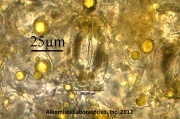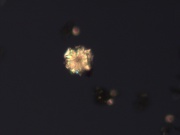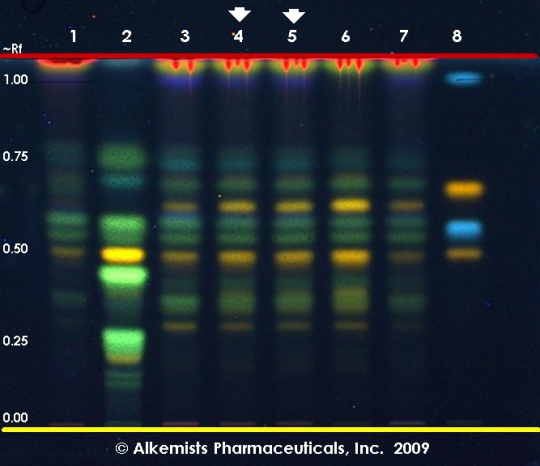Ginkgo biloba (leaf)
Contents |
Introduction
Introduction from Wikipedia, the free encyclopedia (http://en.wikipedia.org/wiki/Ginkgo_biloba, retrieved 02/20/2012).
Ginkgo (Ginkgo biloba; in Chinese and Japanese 銀杏, pinyin romanization: yín xìng, Hepburn romanization: ichō or ginnan), also spelled gingko and known as the Maidenhair Tree, is a unique species of tree with no close living relatives. The tree is widely cultivated and introduced, since an early period in human history, and has various uses as a food and traditional medicine.
Ginkgos are large trees, normally reaching a height of 20–35 m (66–115 feet), with some specimens in China being over 50 m (164 feet). The tree has an angular crown and long, somewhat erratic branches, and is usually deep rooted and resistant to wind and snow damage. Young trees are often tall and slender, and sparsely branched; the crown becomes broader as the tree ages. During autumn, the leaves turn a bright yellow, then fall, sometimes within a short space of time (1–15 days). A combination of resistance to disease, insect-resistant wood and the ability to form aerial roots and sprouts makes ginkgos long-lived, with some specimens claimed to be more than 2,500 years old.
Ginkgo is a relatively shade-intolerant species that (at least in cultivation) grows best in environments that are well-watered and well-drained. The species shows a preference for disturbed sites; in the "semi-wild" stands at Tian Mu Shan, many specimens are found along stream banks, rocky slopes, and cliff edges. Accordingly, Ginkgo retains a prodigious capacity for vegetative growth. It is capable of sprouting from embedded buds near the base of the trunk (lignotubers, or basal chi chi) in response to disturbances, such as soil erosion. Old individuals are also capable of producing aerial roots (chi chi) on the undersides of large branches in response to disturbances such as crown damage; these roots can lead to successful clonal reproduction upon contacting the soil. These strategies are evidently important in the persistence of Ginkgo; in a survey of the "semi-wild" stands remaining in Tian Mu Shan, 40% of the Ginkgo specimens surveyed were multi-stemmed, and few saplings were present.
The quoted text in this section was licensed for use under the Creative Commons ShareAlike License, version 3.0: http://creativecommons.org/licenses/by-sa/3.0/
Macroscopic Entries
|
|
Microscopic Entries
|
|
HPTLC Entries
|
Ginkgo (leaf) Ginkgo biloba Lane Assignments Lane 1(3μl) Ginkgo biloba (leaf) (Vouchered Sample); Lane 2(3μl) Sophora japonica (fruit); Lane 3(3μl) Ginkgo biloba (leaf); Lane 4(3μl) Ginkgo biloba (leaf); Lane 5(3μl) Ginkgo biloba (leaf); Lane 6(3μl) Ginkgo biloba (leaf) (USA); Lane 7(3μl) Ginkgo biloba (leaf) (China) authenticated by macroscopic, microscopic &/or TLC studies according to the reference sources cited below held at Alkemists Pharmaceuticals, Costa Mesa, CA. Stationary Phase Silica gel 60, F254, 10 x 10 cm HPTLC plates Mobile Phase ethyl acetate: glacial acetic acid: formic acid: water [10/1.1/1.1/2.4] Sample Preparation Method 0.3 g + 3 ml 100% grain EtOH sonicated + heated @ 50° C ~ 1 hr. Detection Method Natural Product Reagent + PEG -> UV 365 nm Reference see British Pharmacopoeia, 2003
|
Other Points of Interest
Ginkgo (leaf extract) (Ginkgo biloba) standardized to flavonol glycosides and terpenes.
General Characteristics AHPA recommends in its Known Adulterants list that appropriate steps be taken to assure that this raw material is free of the noted adulterant. Contact AHPA for additional information regarding relevant analytical methods or follow this link for more information.
Reported Adulterants Ginkgo (Ginkgo biloba) leaf extract with added flavonol glycosides or aglycones (e.g., rutin, quercetin, etc.).
Source: AHPA Known Adulterants [6]
Cite error: <ref> tags exist, but no <references/> tag was found






